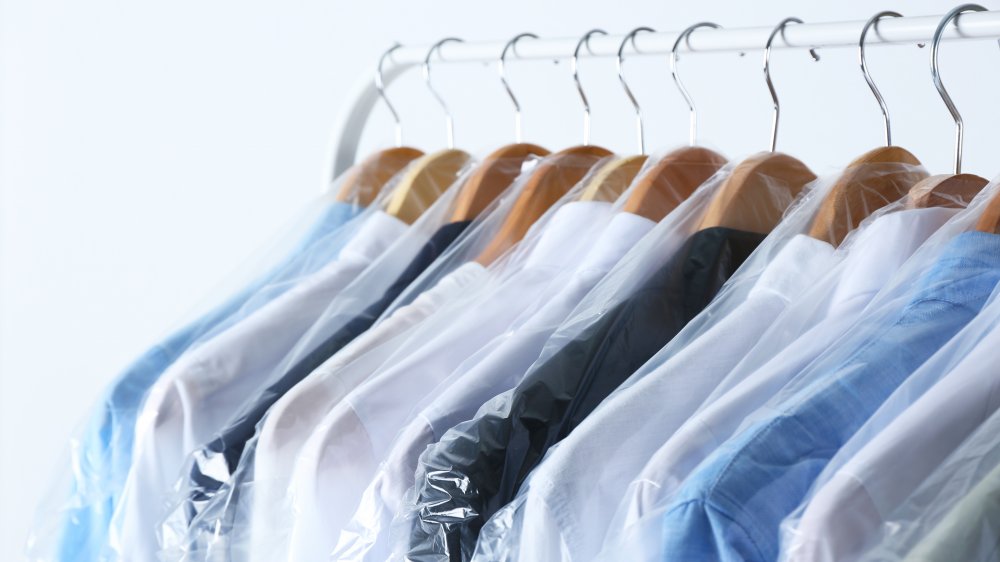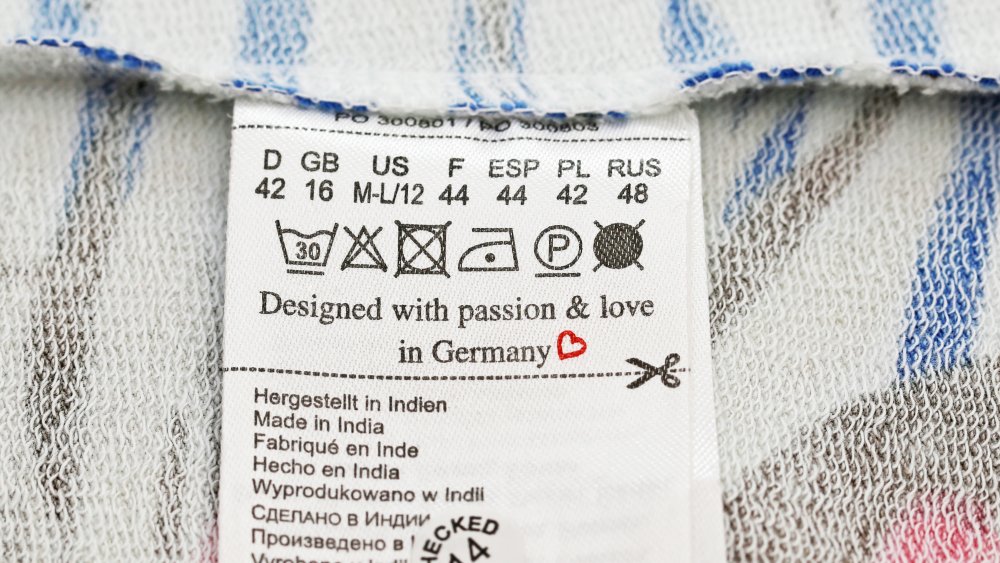The Right Way To Wash 'Dry Clean Only' Clothes At Home
If you don't remember the last time you stopped at the dry cleaners, and the pile of clothes in your bedroom is rising as we speak, you might want to attempt washing your "dry clean only" clothes at home instead. While the clothing tags instruct you to send 'em to the cleaners, there is a chance your favorite outfit'll survive a session in the washing machine, especially since professional cleaners admit dry clean labels can be considered a "cover all" by clothing manufacturers (via USA Today). "Depending on the fabric, some clothes labeled 'dry clean only' can be washed at home — whether you put it in the washing machine or hand wash it. All you need to do is be careful," fashion stylist Cindy Conroy tells Taste of Home.
Before you toss an outfit in the washing machine, note what the fabric is to be sure you aren't about to ruin it. Delicate fabrics include suede, leather, velvet, taffeta, rayon, fur, and down. These items aren't likely to make it through a wash cycle intact. Some suits and pleated skirts will be okay washed in water, but start out washing something a bit less iffy first.
After you determine your clothes aren't made from fabrics that cannot be cleaned with water, you'll be left with wool, some silks, cotton, linen, and sturdier polyester fabrics, which can tolerate a mild session in the washing machine. Even cashmere can thrive when it's hand washed in cold water with a cashmere shampoo.
How to wash and dry your 'dry clean only' garments properly
Start out hand washing your clothes by taking a bar of laundry soap and using that to rub at stains. When you're done, it's best to use cold water to rid your clothing of soap. If you want to use the washing machine, first, separate lights and darks to avoid the bleeding of colors! Then, Conroy suggests employing a gentle, but heavy-duty detergent like Woolite, and make sure to use the gentle cycle on your machine. To dry your "dry clean only" clothes you just washed yourself at home (well done you!), place delicate clothing flat on a rack, then transfer the items to hangers — but avoid wire hangars that may result in misshapen clothes.
Another way to dry the clothes is to roll them up in a clean towel and squeeze out the water (do this a few times at least) before laying the items flat. Finally, according to Conroy, you shouldn't let your clothes dry all the way. She advises, "You want them to be damp to the touch, not sopping wet. When they are, they're ready to be steamed. If you don't have a steamer at home, you can use an iron, but you'll only get that professional dry cleaned look with a steamer. So it's worth the investment."

